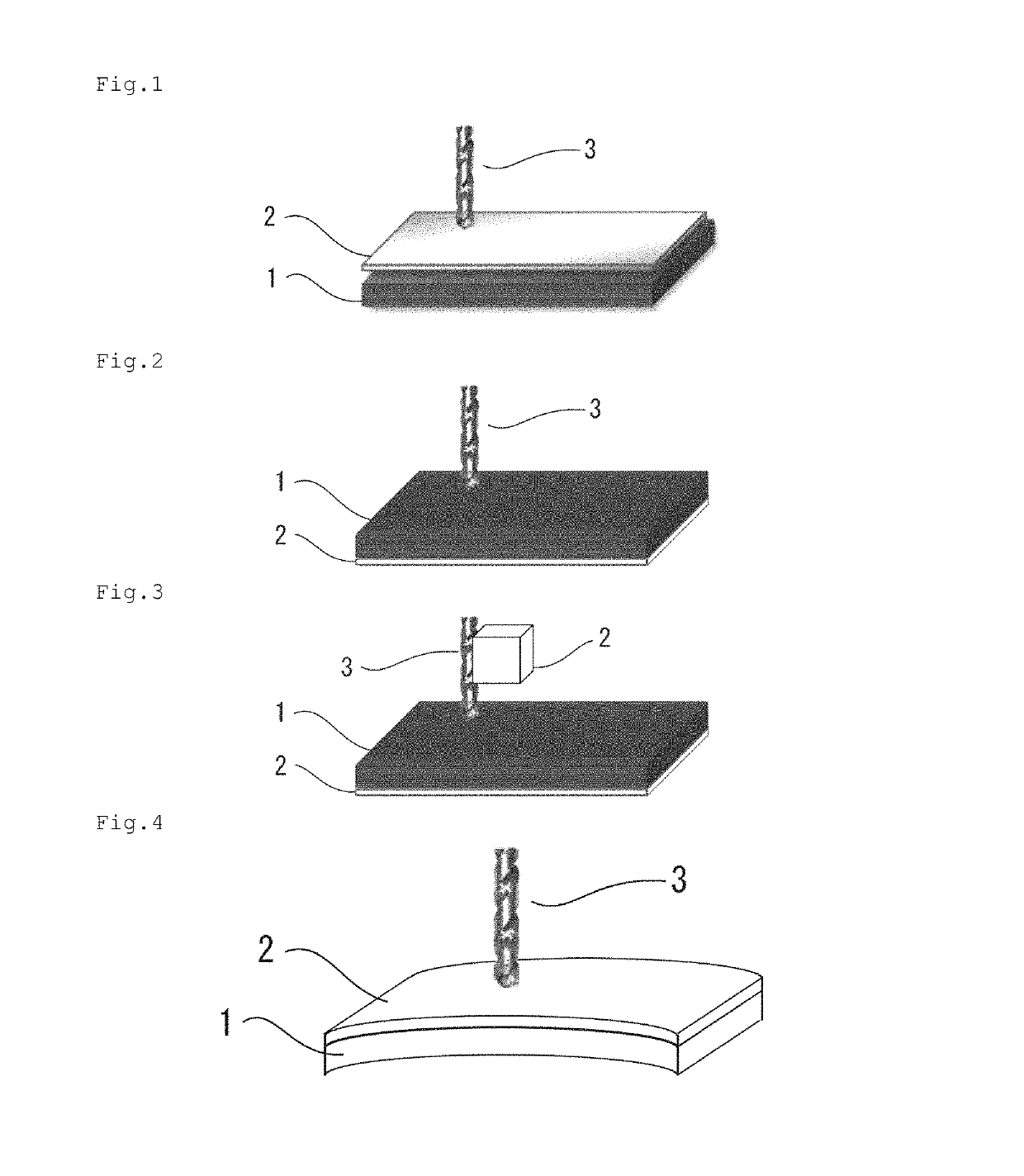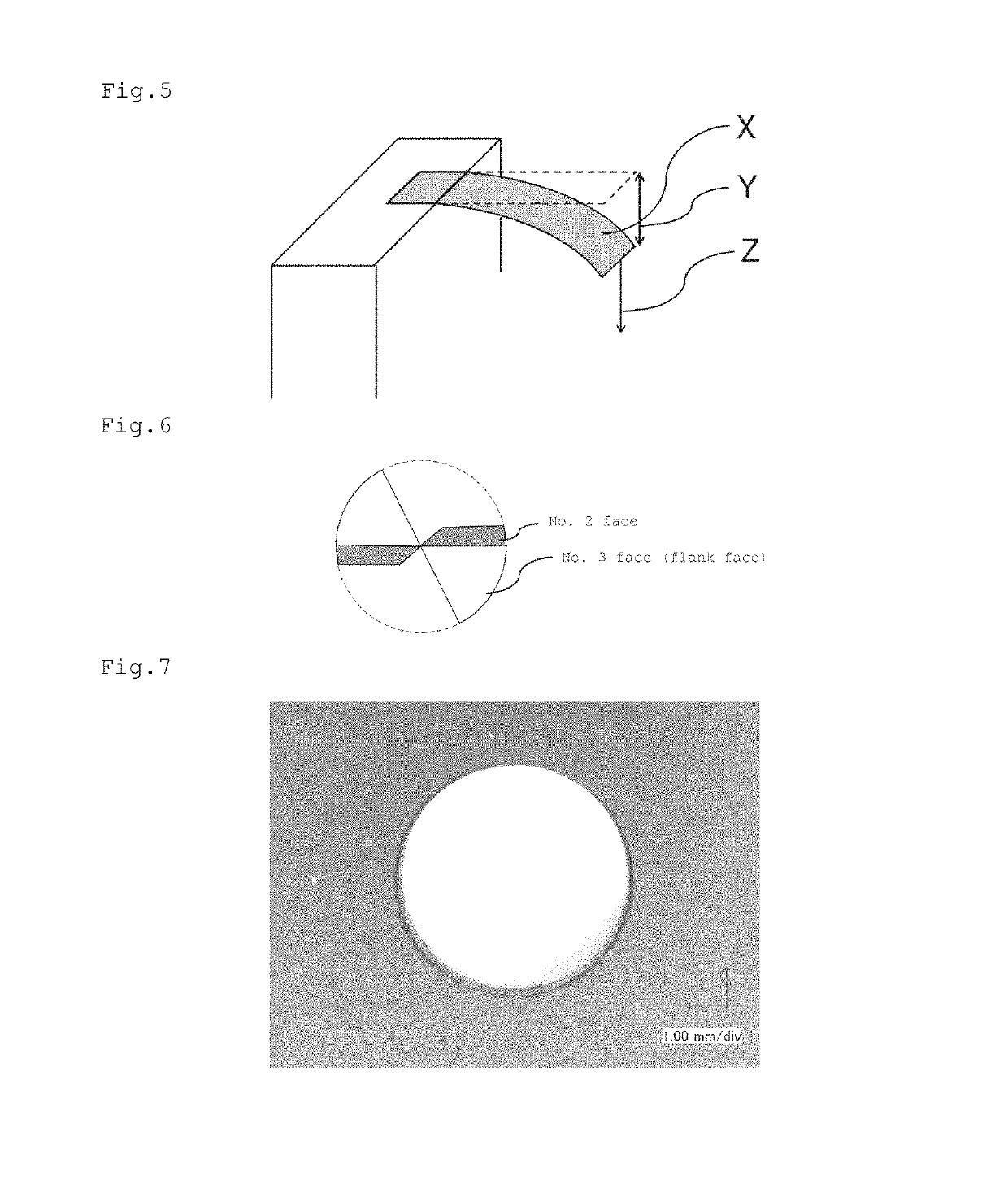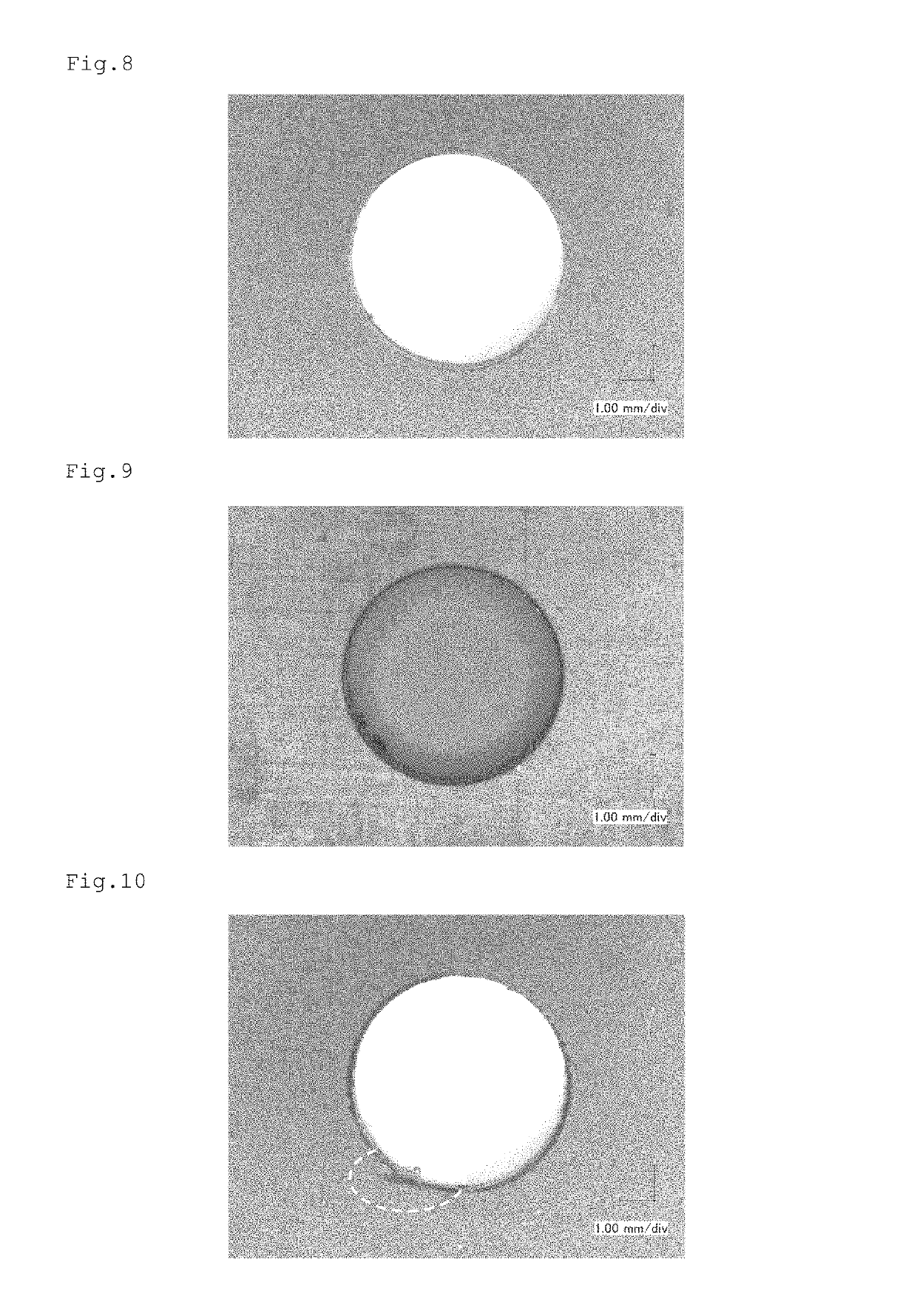Lubricant material for assisting machining process and machining method
a technology of lubricant material and machining method, which is applied in the direction of film/foil adhesive, turning machine accessories, synthetic resin layered products, etc., can solve the problems of reducing the quality of processed holes, reducing the life of drills, and non-uniform inside diameter, so as to reduce the load of machining tools and reduce the occurrence of chipping
- Summary
- Abstract
- Description
- Claims
- Application Information
AI Technical Summary
Benefits of technology
Problems solved by technology
Method used
Image
Examples
embodiment 1
[0177]When the machining step is a step of forming a machined portion (e.g., a processed hole) having the exit and the entrance of the machining tool, the machining method of embodiment 1 comprises, before the machining step, a close contact step of closely bringing in advance the lubricant material for assisting machining process into contact with a portion to be the exit and / or a portion to be the entry of the machining tool, in the workpiece material. In this context, the “portion to be the exit” can be used interchangeably with a face to serve as the exit if this portion is a face. In response to this, the “portion to be the entry” can be used interchangeably with a face to serve as the entrance.
[0178]In drilling work, the neighborhoods of the edges of a hole (machined portion) to be obtained correspond to the “portion to be the entry” and the “portion to be the exit”. In grooving work, the neighborhood of the edge of a groove (machined portion) to be obtained corresponds to the...
embodiment 1-1
[0180]In embodiment 1-1, the lubricant material for assisting machining process 2 is closely brought in advance into contact with a portion to be the entry of a machining tool 3, in the workpiece material 1, and the workpiece material 1 is processed with the machining tool 3 (FIG. 1). In this case, the lubricant material for assisting machining process 2 comes in contact with the machining tool 3 prior to the workpiece material 1.
[0181]The lubricant material for assisting machining process is placed, for use, at the portion to be the entry of the machining tool to thereby transfer a lubricating component of the lubricant material for assisting machining process to the tip of the tool immediately before processing. Therefore, the lubricating effect of the lubricant material for assisting machining process is exerted more effectively. The lubricant material for assisting machining process placed at the portion to be the entry also acts as a buffer material upon entry of the machining ...
embodiment 1-2
[0187]In embodiment 1-2, the lubricant material for assisting machining process 2 is closely brought in advance into contact with a portion to be the exit of the machining tool 3, in the workpiece material 1, and the workpiece material 1 is processed with the machining tool 3 (FIG. 2). In this case, the lubricant material for assisting machining process 2 comes in contact with the machining tool 3 after the completion of penetration into the workpiece material 1.
[0188]The lubricant material for assisting machining process is placed, for use, at the portion to be the exit of the machining tool so that the lubricant material for assisting machining process acts as a lubricant agent. This can reduce load to the machining tool at the time of machining process, suppress the abrasion of the machining tool, and prolong the lifespan of the machining tool. As a result, cost required for machining tools, the number of runs of a machining tool change step, or the like can be reduced. Thus, mac...
PUM
| Property | Measurement | Unit |
|---|---|---|
| particle size | aaaaa | aaaaa |
| thickness | aaaaa | aaaaa |
| thickness | aaaaa | aaaaa |
Abstract
Description
Claims
Application Information
 Login to View More
Login to View More - R&D
- Intellectual Property
- Life Sciences
- Materials
- Tech Scout
- Unparalleled Data Quality
- Higher Quality Content
- 60% Fewer Hallucinations
Browse by: Latest US Patents, China's latest patents, Technical Efficacy Thesaurus, Application Domain, Technology Topic, Popular Technical Reports.
© 2025 PatSnap. All rights reserved.Legal|Privacy policy|Modern Slavery Act Transparency Statement|Sitemap|About US| Contact US: help@patsnap.com



